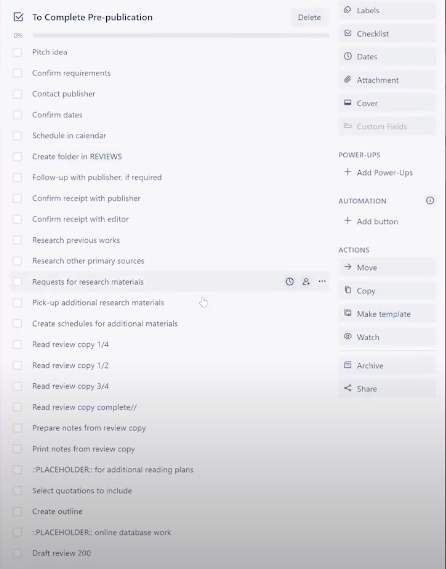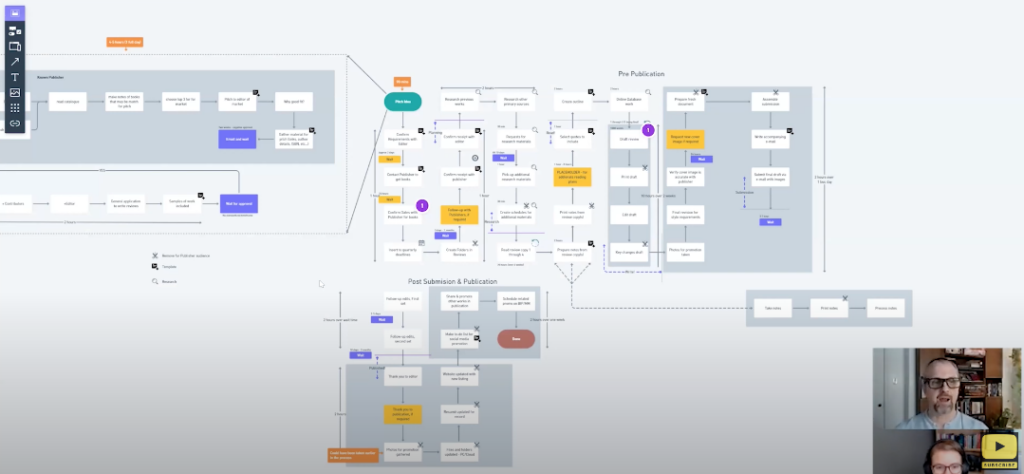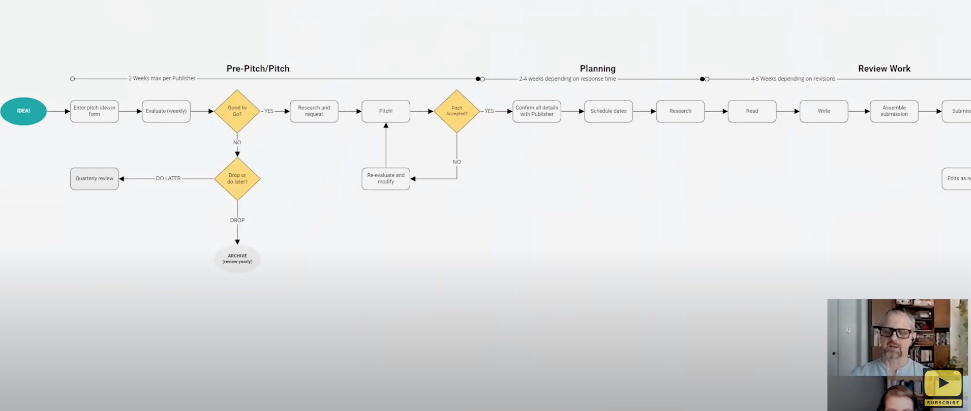Looking to switch from Trello to ClickUp but aren’t sure how to make it work for your creative workflows? Try process mapping!
In this interview, Michael (a member of the ProcessDriven Membership) is going to take us behind the scenes on how he’s streamlined a creative workflow using process mapping.
🕵️♀️ About our Guest: Michael’s owned his own business and held executive positions in startups and multinational corporations. He supports and shapes leaders, so everyone in an organization can be their natural best–from solopreneurs to managers, novices to professionals, and in between. Sometimes a systematic and personalized workflow can make all the difference.
👋 Connect with our Guest on his website, LinkedIn or on Instagram!
Want to see the full interview (plus get ALL the other ProcessDriven Membership features)? Join us inside here.
You asked, and we delivered
Lately, we’ve seen an increased interest in how people are putting our teachings to use. Whether it’s directly in ClickUp or it’s simply by process mapping, we love a good behind-the-curtain peek.
In our free content on our YouTube Channel, you can see a lot of how we use ClickUp, but recently we put out a request to some of our ProcessDriven membership members to see if they would mind showing us a process that works really well for them.
Meet ProcessDriven Community Member, Michael
Michael helps organizations build processes and helps new managers find their footing to keep track of everything they have on their plate. Since he has his hands in so many things, he could teach us a ton about his processes, but in this video, we’re focusing on one specific process.
Today’s Focus: Process Mapping for a Writer and Book Editor
In this example, Michael shows us a process he set up for a writer and book editor. Really, it could be used as inspiration for someone in any creative industry, but we’re so excited to dive in and take a look at what he has set up.
Taking a Trello Card and putting it into a Process Map
Let’s take a look at the initial setup they were working with inside of Trello:

As you can see, there’s a lot going on here. Let’s take a look at each cards checklist as well:

This image cuts off a ton of the steps, but even with just this sneak peek it’s easy to see that there are several steps for each Trello card. As you can imagine, this gets overwhelming quickly and leaves a lot of room for stuff to get lost in the cracks.
The first step he took the book editor through was by asking, “How can we simplify this?”
Asking this question is key to process mapping. This is what it looked like after they sat down to map things out:

They created this map by asking, “What are the exact steps?” This is an excellent question to help you get started on creating your own systems. Now, as you start to map things out, you’ll also see where you can save time, such as by creating email templates for regularly sent emails.
(Michael mentions stacking templates inside his ClickUp account. You can find advanced tips on how to create projects using ClickUp to stack templates? More info on that: here.)
Start by just answering the question “What do I do?”
By starting at the absolute beginning and answering the high-level question of “What do I do?” you can really unravel each of the steps you currently have in your process. Here, we know she’s a writer. We can dig deeper by asking, who is her intended audience? How does she find clients? Who does she write for? Does she need to pitch?
Asking the basic questions is a great place to start to really be able to see the steps under each process, as you start to uncover and map out each one out.
Why bother Process Mapping?

Here, you can start to see how the process mapping looks so much smoother and easier.
If you’re here because you’re just trying to merge your Trello and ClickUp accounts, you might be wondering: “Why can’t I just import my data from Trello to ClickUp? Why would I bother mapping out my processes and doing this extra work?”
The answer: Process mapping forces you to look at everything and figure out not only what each step is, but why it’s important to your workflow. When we take a look at each step individually, we often find that there are multiple steps that are either unnecessary and can be omitted completely, or you may find steps that are needed but can be done in a more efficient way. You could easily copy over bad processes, repeated steps, and faulty systems. Ideally, you want to catch the holes in your process before you import it into a new system.
